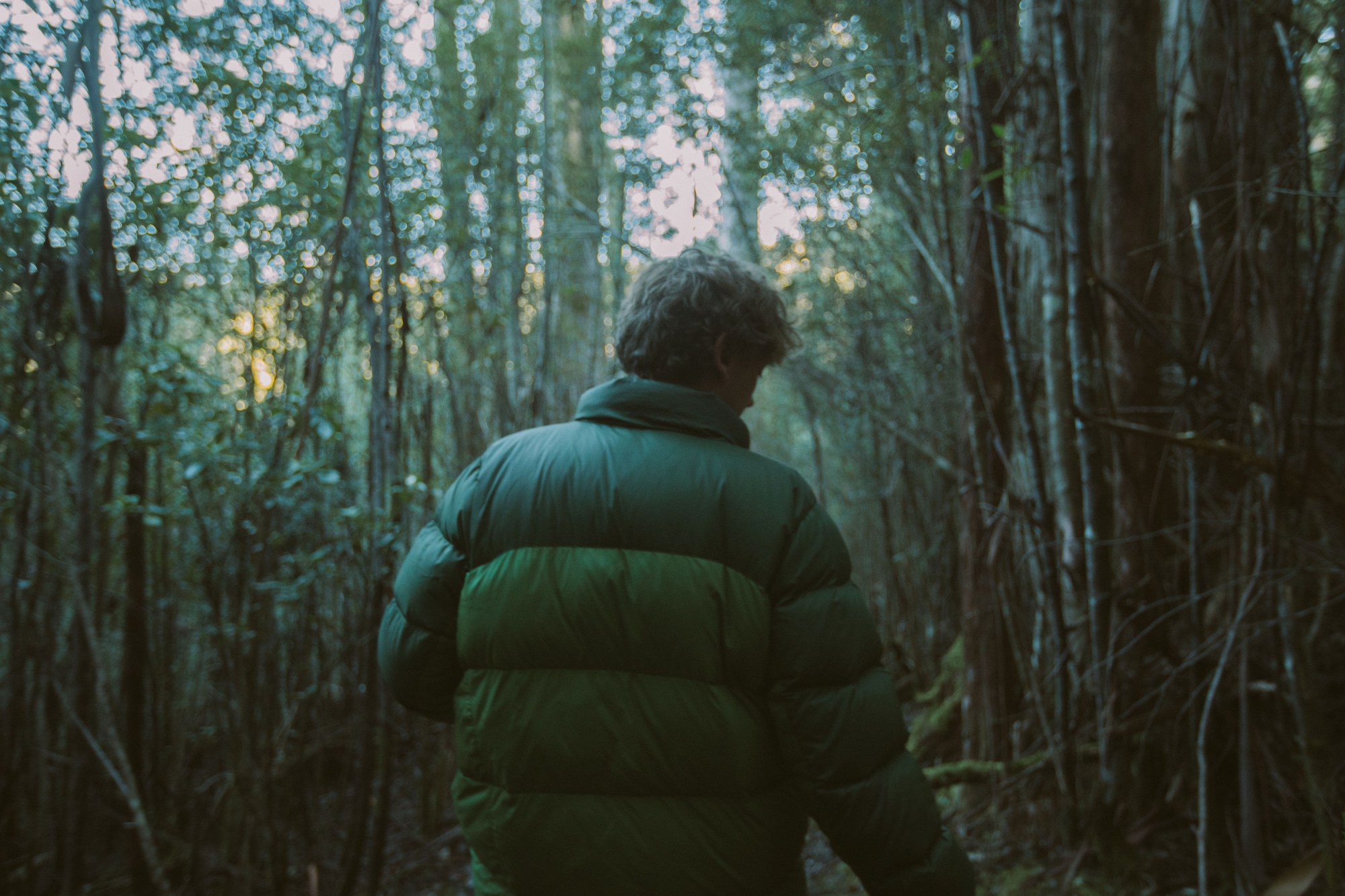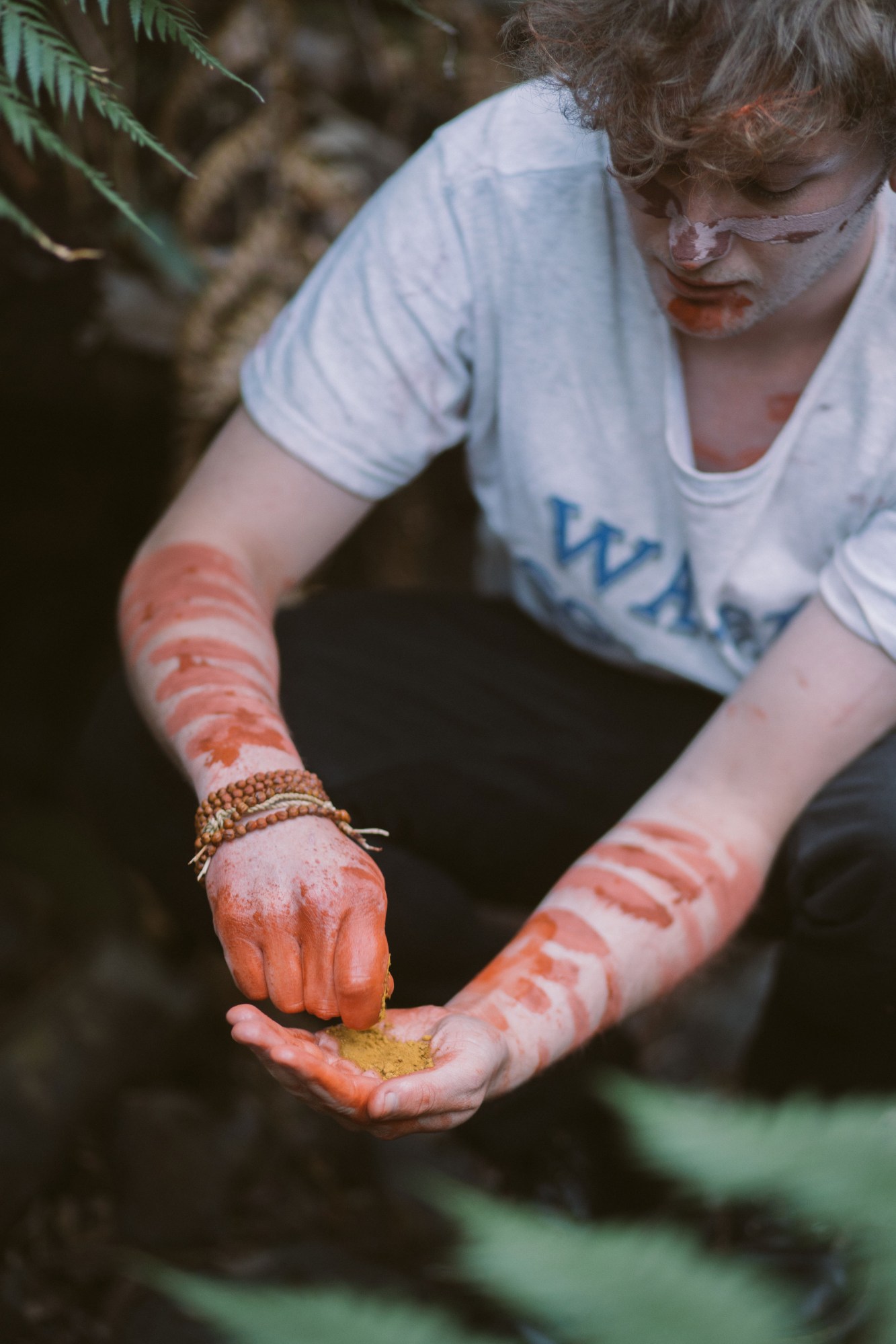Jamie Graham-Blair is a young and warm-hearted specialist in matters of science, Indigenous resistance and the spiritual world. Soon to graduate from University of Tasmania as a Marine and Antarctic scientist and working with NITA Education teaching people Aboriginal practices of sustainability, he is committed to protecting and healing the country. “I’ve always wanted to learn the tools to help protect the environment,” he tells us via Facetime. “I don’t know if it’s because of my heritage or my upbringing, but since primary school I imagined a future where I went to university to study conservation.” At 24, the trawlwoolway pakana from North East lutruwita (Tasmania) is doing what he’s always envisioned.
Jamie’s knowledge about environmental conservation is rooted in traditional Aboriginal practices and further informed by modern science. It’s a well rounded approach that seeks to tackle sustainability from all angles. Through his advocacy Jamie is now asking Australia to listen to Indigenous people in order to survive the environmental and spiritual despair the world is currently facing. We spoke with Jamie about the limitations of Eurocentric universities, how Aboriginal people have always been the original scientists and how younger generations are the key to saving the future.
What’s a major difference between the way Western countries and Indigenous cultures view conservatism ?
Studying environmental science within a Western institution means that the knowledge is very compartmentalised — they like to break things up into maths or physics, all these different little boxes. However, within my culture, conservation is incredibly holistic. I’ve grown up compartmentalising all these different knowledges — plant science is meant to be separate from geology — but really it’s all one thing. I find that beautiful. When I started learning about my culture I realised that our dances speak of ecology, of community, of spirit, it’s all connected. Learning that holistic approach helped me to understand the technical aspect of my degree better.

Did your university degree inform your own cultural background in any way?
I’ve been learning cultural knowledge my whole life but most intensively in the last three years. I’ve known my whole life that I was Aboriginal, but I didn’t know what tribe I came from in lutruwita. Once I took part in a repatriation ceremony I started connecting to country more and was drawn deep into my culture and community. Even through my degree I felt my old people calling out to me, and my studies took on this new meaning because I understood my responsibility of taking care of the land better. When I realised that knowledge was helping me connect to my roots it helped me push forward. It was like a spark lit and all the pieces of the puzzle finally fit together. It felt like the ancestors were calling me to heal the land and help in a meaningful way.
Western cultures seem to assume that Indigenous cultural practices are not based on scientific knowledge.
It’s painful and I feel sorry for people who don’t understand our traditional knowledge. My ancestors were the OG scientists. Science is based on observations and questions — and then testing those questions to find answers. If my people didn’t go through those processes, they wouldn’t have been able to survive for as long as they did — and they didn’t just survive, they thrived. We’ve lived here for millennia, through at least two different ice ages maybe more, so without being able to observe, question and then come up with answers, adapt and share, we wouldn’t have come so far. We are the masters of sustainability and community.
Do you think science and spirituality go hand in hand?
Yes, one example is the smoking ceremonies. During these rituals Indigenous people in Australia — and all over the world — burn certain plants in order to cleanse and welcome you to their country. For a long time the scientific perspective on that was that it was all mumbo jumbo, but as science progressed, they realised that plants like the Eucalypt have strong antibacterial properties that are used in modern medicine today to disinfect. So when our people practice these methods for spiritual reasons like a welcome to the land or introducing you to their ancestors, that ritual is now partially understood by Western science. Smoking ceremonies literally cleanse your body — it’s a medicinal smoke. Western science is slowly catching up to so many of our traditions and stories.

Research shows that Indigenous people worldwide have been practicing environmental sustainability within their spiritual traditions for centuries.
Our culture has always been about protecting country. We look after ourselves, our communities and the resources around us by looking after the land. For example, we’ve always known how and when to burn certain areas to help with regrowth and to reduce bushfires. We can tell simply by listening to country when she needs to be burnt. We burn it, open country up, and this helps other species thrive. One example is the Orange-bellied parrot, which migrates between Victoria and lutruwita every year. When it lands down here it nests in the gum trees and feeds on the button grass plains, but both of these plants need good fire to be healthy and grow. When [British fleets] rounded up our people and chucked us onto offshore islands in the Bass Strait, our country stopped getting that medicine — the good fire — that it needed and so did we. The forest started to encroach on all the grasslands, and the Orange-bellied parrot numbers started to decline. At the start of this year there were only 14 remaining. Only recently, conservation groups have realised what was going on and began talks of implementing burning regimes to increase the parrot’s population. They realised the things we were doing for tens of thousands of years, needed to start again.
This shows how much Europe’s invasion directly led to an ecocide.
Yes, that’s just one example of how removing us and our knowledge from our land makes country suffer. It wasn’t until non-Aboriginal people realised what was happening [to the Orange-bellied parrots] through their scientific processes that they truly understood that Aboriginal people were practicing burning traditions for specific environmental functions. These ceremonies and practices are good for country, the whole system, including ourselves. [Settlers] think of fire as a destructive and scary thing but within our culture it’s as healing as water. The bush can’t survive without fire, just as it can’t survive without rain.
In recent years there’s been massive generational changes and kids seem more political than ever. As someone who is often teaching kids, what changes have you noticed?
When my mother was in school, she was taught that Tasmanian Aboriginal people didn’t exist. I was even taught that in school and I’m 24, you can imagine how conflicting that is. These myths are still perpetuated behind closed doors, but at least now we get to go to schools, teach about our culture, our shared history and they see we still exist and have a wealth of knowledge in connecting to and protecting our land. The majority of kids are so accepting it’s heart-warming, the most common comments we get are, “Why haven’t we been taught this earlier? Why is this not just part of our everyday lives?” They connect to the knowledge because it’s a human thing to want to connect to nature. We can’t truly disconnect ourselves from country because we are country.

Is your vision of Australia’s future hopeful?
One of the most incredible things I’ve heard an older student say was, “Imagine where we could be as a nation, if instead of dispossessing the Aboriginal people, we learnt from them when we arrived.” Imagine where this nation could be, if we had worked in parallel, if these two empires came together to inspire and create. I’m envisioning really healthy country, more connection and happier people. I don’t think it’s good to dwell on what could have been but I believe every day is a new opportunity to work towards that vision.
What’s the best thing Australia can do to help curve environmental crisis?
Listen and support Indigenous voices on these issues — we know what we are talking about. For example, SEED mob are at the forefront of the climate justice movement here in Australia. We are calling for the banning of fracking in the Northern Territory, to stop Adani’s mega mine and to help the Murray-Darling. Listen to us and take us seriously — we get ignored so often. A proud Butchella woman once said, “As climate change continues to make our country sick it’s going to come to a point where everyone is going to need us, everyone is going to need our knowledge. I would like to ask people — why don’t you start listening now?”
We acknowledge that we work on stolen land and pay our respects to First Nations elders past, present and emerging. Sovereignty was never ceded.
